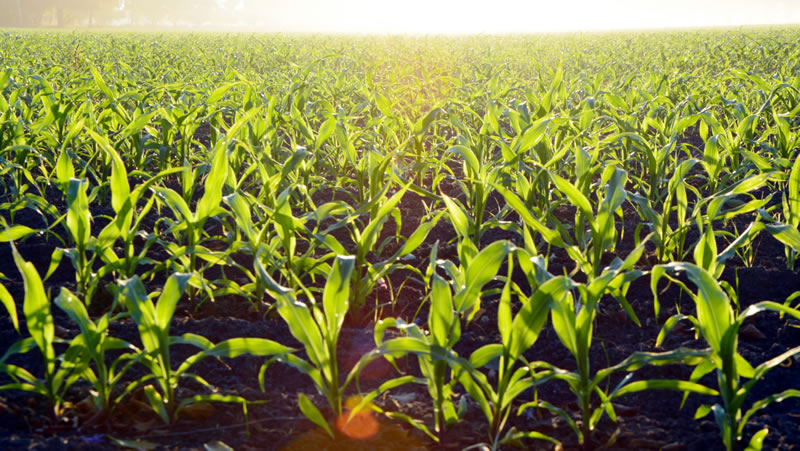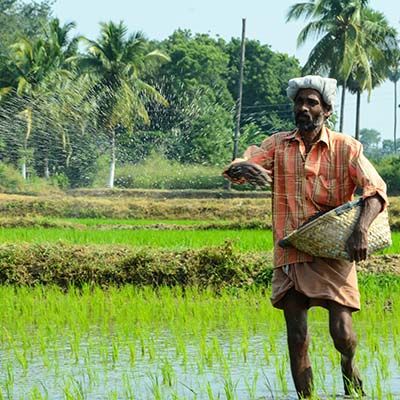
Haryana, which became a state on November 1, 1966, has a population of less than 2 percent of India’s total population. This state, which has a land size of 44.2 thousand square kilometers, accounts for about 1.37 percent of the overall geographical area of the country.
Haryana, which has been in existence for less than three decades, has carved out a distinct niche for itself. According to the World Bank, Haryana has the third highest per capita income in India, with a total of 214,509 (US$3,300) in 2016–17, compared to the national average of 112,432 (US$1,800). Haryana has been the largest recipient of investment per capita in India since 2000, and it is one of the wealthiest and most economically developed regions in South Asia.
Income from Haryana Agriculture
Table of Contents
Haryana’s estimated state GSDP of US$95 billion in 2017-18 (52 percent services, 30 percent industries, and 18 percent agriculture) is growing at a 12.96 percent compound annual growth rate (CAGR) from 2012-17 and is ranked 14th in the country behind only much larger states.
According to the World Economic Forum, Gurugram ranks first in India in terms of IT growth rate and present technical infrastructure, and second in terms of startup environment, innovation, and livability.
Geographical Significance of Agriculture in Haryana
The Indus Valley Civilization monuments at Rakhigarhi village in Hisar district and Bhirrana in Fatehabad district are among the world’s oldest and biggest ancient civilizations, dating back more than 9,000 years. It is surrounded by Himachal Pradesh to the north-east, by the river Yamuna along its eastern border with Uttar Pradesh to the west and south, and by Rajasthan to the west and south.
The Ghaggar-Hakra River flows along its northern border with Punjab. Haryana is bounded on three sides by the national capital Delhi (north, west, and south), and as a consequence, a significant chunk of the state is included in the National Capital Region, which is critical for economic development and planning.
Haryana, often known as the “Bread Basket of India,” has been at the forefront of the adoption of cutting-edge agricultural technology and is considered to be one of the country’s main producers of agricultural commodities and food.
Important Points regarding the state of Agriculture in Haryana
- As a food producer, Haryana is self-sufficient, and it is the second greatest provider to India’s central pool of grain.
- The state provides an astonishing 14 percent contribution to the Central Pool and has attained a total of 163.33 lakh metric tonnes (MT) of food grain output in fiscal year 2015-16.
- A variety of crops are grown in April and May and harvested in November. The most important of them are rice, jowar, bajra (wheat), maize, cotton, jute, sugarcane, sesame, groundnut and sesame oil.
- Wheat, tobacco, gramme, linseed, rapeseed, and mustard are the most important Rabi crops, which are planted in late October or early November and harvested in March.
- Approximately 86 percent of the land area is arable, with 96 percent of it being farmed.
- Irrigation is provided via tube wells and a comprehensive network of canals for approximately 75% of the land area.
- The state has assured irrigation on approximately two-thirds of its land area, which is best suited for rice-wheat production systems, whereas rain-fed lands (on approximately one-fifth of its land area) are best suited for rapseed and mustard, pearl millet, cluster bean cultivation, forestry, and arid horticulture.
- The strategic position of the state abutting the National Capital Region (NCR) provides easy access to a variety of large marketplaces as well as the international airport.
- Rice, wheat, rapeseed and mustard, bajra, cotton, and sugarcane are the principal crops, and there is significant potential for agricultural diversification as well as off-farm activities in this region.
- Cauliflower, onion, potato, tomato, chillies, guava, and kinnow are some of the most significant horticultural crops with great potential, as are other vegetables and fruits.
- 37 mandis in the state have been connected to the e-NAM (National Agricultural Market) plan in order to make the system for trading agricultural produce smoother, more transparent, and farmer/arhtiya friendlier, according to the state government.
- The state ranks second in the country in terms of fish yield per hectare, and the Indian Council of Agricultural Research has designated it as a “Fish Disease Free State.”
Farmers are confronted with a number of significant issues

- Farmers, particularly those in the small and marginal categories, are being pushed into poverty as agricultural production declines, costs of cultivation rise, and prices are not being realised at their full potential.
- In diverse crops, high-quality seed resulted in yield increases of 15 to 20 percent. Farmers sometimes have difficulty in obtaining high-quality seed of improved varieties/hybrids prior to the start of the growing season.
- Farmers’ friendly little tools and agricultural implements are either not available to them or they are dissatisfied with their working efficiency, resulting in the payment of labour costs and an increase in the cost of agriculture.
- In agriculture, prices are set by parties other than the producer, and this is the only industry in which this is true. Another issue is that the extensive network of middlemen for marketing consumes the farmers’ profit margin, leaving them with a bare minimum profit for their goods.
- Yield gaps between research stations/Field Level Demonstrations and farmers’ fields, as well as a lack of understanding about current agriculture technology and the surrounding environment, lead to rising costs of cultivation without an increase in productivity and, consequently, profits for farmers.
- Farmers’ lack of awareness about the most recent technology and numerous government programmes, as well as their lack of information, inhibits their capacity to earn a profit on their crops.
Natural Resource Management Problems in Haryana’s Agriculture Sector
Agricultural Soil Resources: Different production systems in the state have been observed to have problems with soil degradation (soil compaction, soil salinity, soil sodicity, water logging, and pesticide residue), multiple nutrient deficiency, low organic carbon content, and a decline in total factor productivity. In addition, the diversion of agricultural land for non-agricultural use is becoming a significant issue.
Water Resources: Agriculture now utilises almost 80% of total water consumption. In the state, approximately 60% of the available excellent quality water for guaranteed irrigation is used for this purpose. Because of increased demand for fresh water for home and industrial purposes, the supply of irrigation water will continue to dwindle in the future.
The over-exploitation of ground water in Haryana is emerging as a severe danger to the state’s water supply. In Haryana, brackish groundwater accounts for around 65 percent of the total groundwater supply. Furthermore, untreated industrial effluents and sewage water are being discharged into the canal system, polluting the fresh water supply.
Climate Change: Climate change is increasing the issues that the agriculture industry is facing, severely impacting both crop and livestock systems in the majority of countries and areas throughout the world. The irregular shift in climate is causing additional stress on crops, resulting in higher resource consumption and increased risks of pest resistance as well as recurrence of pests.